As various pieces are being put into place for a long-awaited, much-needed ultra high-definition (UHD) standard, there’s been an unexpected development in the realm of Ultra HD displays that are available for purchase by consumers. A new type of UHD LED LCDs – dubbed “RGBW TV” – has been introduced to the market, which adds a white subpixel to the traditional ensemble of red, green and blue subpixels.
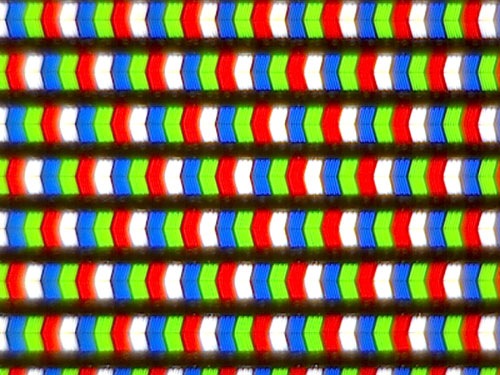 |
| Macro photo of the RGBW subpixel layout on an LED LCD TV |
Of course, informed readers will note that RGBW or WRGB subpixel arrangement is not new among HD or 4K televisions – LG’s OLED TVs famously use this subpixel layout that has allowed the company to establish dominance in the large-screen OLED arena. However, there’s one key distinction in the way these new RGBW LED televisions are driven: each white subpixel is shared between the adjacent RGB subpixels, which means that each row on a 3840×2160 RGBW LED LCD display will only have 2880 subunits that are capable of reproducing the full range of colours.
This is where the definitions get murky. UHD resolution can be crudely defined as 3840×2160 pixels, which an RGBW LED TV will have no problem satisfying if only a black-and-white pattern is used as the passing criteria. But by replacing every fourth subpixel with a white one, the result is a 25% decrease in the number of separately addressable RGB subpixels. Detractors of this technology argue that RGBW LCD TVs shouldn’t even be sold as 4K TVs, since 3 out of 4 three-subpixel arrays (RGB, WRG, BWR, GBW) cannot express the full range of colour information found in RGB video.
Meanwhile, proponents of RGBW LED LCDs cite lower power consumption, higher brightness, and perhaps most importantly, reduced manufacturing cost as the advantages. Who’s right and who’s wrong? To find out, we got our hands on an RGBW LED LCD television that’s available to buy in the UK (the LG 43UF690V), and conducted a series of tests in a side-by-side comparison against a 4K Ultra HD TV that uses conventional RGB subpixel layout (the Samsung UE48JU7000 we recently reviewed).
We set the resolution output from our DVDO AVLab TPG signal generator to 3840×2160/24p, and sent the following test patterns to both displays:
The RGBW TV failed to resolve the single-pixel chequerboard pattern, smudging the dots into greys interjected by vertical lines. It fully displayed the 3840 vertical and 2160 horizontal single-pixel lines, but exhibited obvious colour shift with the former. By contrast, the standard RGB LCD television resolved all three patterns without introducing any undue tinting.
| RGBW TV | RGB TV |
To be fair, the slight loss in resolution detail on the RGBW display wasn’t really visible in most real-world content except for fine text not looking pin-sharp from a 4K PC.
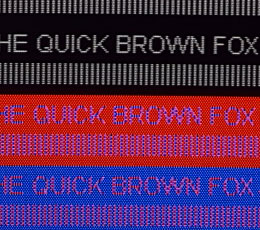 | 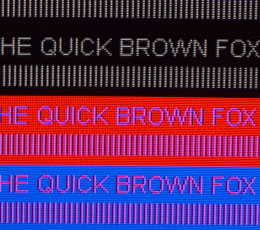 |
| Fine text rendering at 3840×2160@60Hz 4:4:4 on RGBW vs RGB LED TVs |
While calibrating the RGBW display, we caught its light output dropping slightly from our calibrated value of 120 cd/m2 to 117.5 cd/m2 when we accidentally summoned the TV’s information banner. Curious, we ran a sequence of patterns featuring a constant central white patch with varying APL (Average Picture Level) surround, and indeed, the luminance measured from the central white patch decreased progressively as the APL increased. It seemed that the RGBW television was automatically adjusting the white luminance to minimise colour distortion when other elements were present on screen.
Greyscale, gamma and colours were a mess on the RGBW TV, presumably due to a mismatch between the incoming RGB video signal and the RGBW subpixel structure. In particular, colour luminance was impossible to get right on the sample we tested. A Rec.709 or DCI display whose white is calibrated to D65 at 100 nits should deliver red at around 21 nits, green at 72 nits and blue at 7 nits. But because of the dilution caused by the addition of white subpixel, measured red, green and blue luminance values all fell short of their respective targets.
We tried using the RGBW television’s onboard colour management system (CMS) to rectify the deficiencies, but to no avail. Even if we had succeeded, the calibrated result would apply only to the specific signal/ pattern used during calibration, and wouldn’t be transferable to real-world content, since the TV would alter the peak white and colour brightness dynamically depending on the Average Picture Level on screen.
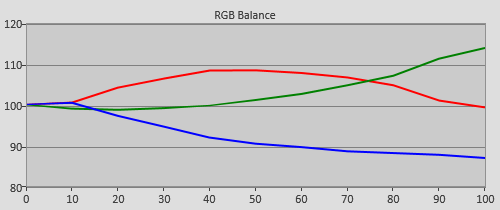 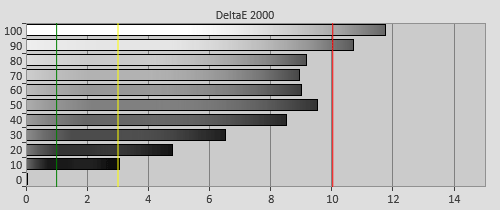 |
| Pre-calibration RGB tracking and delta errors (dEs) |
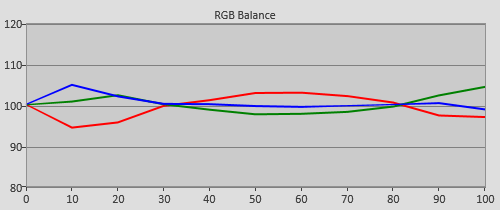 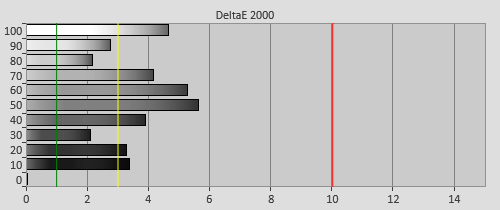 |
| Post-calibration RGB tracking and dEs |
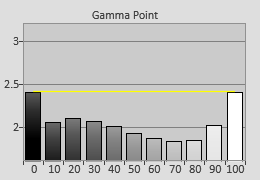 | 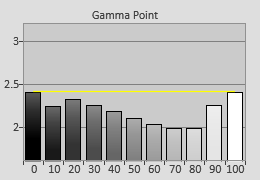 |
| Pre-calibration gamma tracking (1.97) | Post-calibration gamma tracking (2.15) |
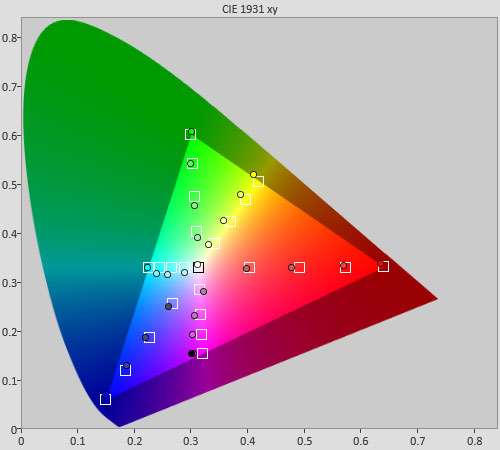 |
| Post-calibration colour saturation tracking |
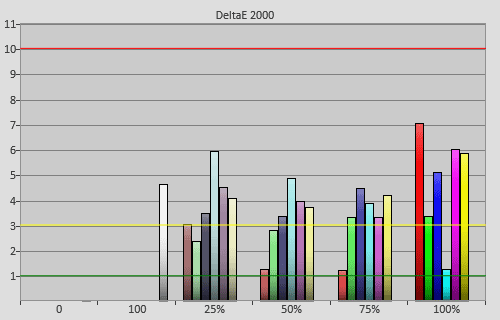 |
| Post-calibration colour errors (>3 is appreciable to the eye) |
We watched a variety of material including our reference Blu-ray films on both the calibrated RGBW and RGB LED televisions, and consistently found the colours and tonality on the RGBW set to not look quite right, with skin tones in particular appearing pasty fairly frequently.
We’re confused by the purpose of an RGBW LED LCD TV. Yes, it can resolve 3840 pixels horizontally and 2160 pixels vertically (though not both at the same time), but that’s beside the point. The diluting effect of the additional white subpixel damages colour fidelity irreparably: by trying to shoehorn RGB video signals into an RGBW matrix, colour information is lost, and users will never be able to enjoy movies in the manner intended by the director.
At a time when ultra high-definition is just taking off, this sort of product does nothing to regain the trust of sceptical consumers who have been burnt by passing fads, planned obsolescence and limited upgrade path. To market an RGBW LED television as 4K Ultra HD is short-sighted, running counter to the industry’s shift in emphasis from more pixels to better pixels in the next phase of UHD development. An RGBW LED LCD TV may be cheaper, but you’ll be paying the ultimate price in the form of compromised picture quality.
Note: We have reached out to LG for comment, and will update this article when we hear back.